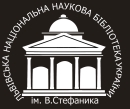ARTICLE DESIGN REQUIREMENTS
The author's manuscript of a scientific article submitted to the editorial board of the journal Press Studies should contain the following structural elements (in bold): problem statement; aim; object of the study; analysis of recent research and publications; novelty; research methods; presentation of the main material and conclusions.
The structure of the article:
First name Surname
ORCID ID
academic degree and title
position, institution
(city, country)
UDC index
Title of the article
The abstract should be structured (For papers not in English, an abstract should be submitted in English; for papers not in Ukrainian, an abstract should be submitted in Ukrainian). It is recommended to indicate the following: problematics, aim/objectives, methods, results/conclusions, novelty of the study. The abstract should be 1800–2000 characters.
Keywords/phrases: 5–7 words.
The text of the article with all the necessary elements
References
Block of the paper in Ukrainian. Its elements should be placed in the following order:
First name Surname
ORCID ID
academic degree and title
position, institution
(city, country)
Title of the article
Анотація (Abstract in Ukrainian) should be structured. It is recommended to indicate the following: problematics, purpose/objectives, methods, results/conclusions, novelty of the study. The abstract should be 1800–2000 characters.
Ключові слова (Keywords): 5–7 words.
Formatting and desing guidelines
Full paper should be 0.5-1 of author’s sheet (20-40 thousand characters including spaces), text editor – at least Microsoft Office 2003, 14–point type, Times New Roman, spacing – 1.5, all margins of the document –2 cm, paragraph indentation – 1.27 cm.
References in the text should be given in parentheses in the original language and should follow the international style of citation and bibliographic descriptions in the APA bibliography7 (https://www.citefast.com/styleguide.php?style=APA7&sec=inte).
For example:
Single author
(Mykolaichuk, 2019) or (Mykolaichuk, 2020, p. 55) or (Mykolaichuk, 2019; Mykolaichuk, 2020, p. 55).
Several articles by the same author in the same year
Add the letters a, b, c, etc. to the year: (Mykolaichuk, 2019a, p. 2), (Mykolaichuk, 2019b, p. 55) or (Mykolaichuk, 2019a, p. 2; Mykolaichuk, 2019b, p. 55).
Two authors
Both surnames should be given and the sign &: should be used (Mykolaichuk & Biletsky, 2001, pp. 23-41).
Multiple authors
Only the first author's name should be given: (Biletsky et al., 2001).
No author
A long title should be shortened to the first few words: (Memorial Book..., 1980, p. 286).
No author or title
The first 2-3 full words of the first sentence should be placed in quotation marks and followed by an ellipsis: («The Field Hospital Administration...», 1918, p. 4).
In the titles please use the French quotation marks « ».
Notes should be given on a page-by-page basis with a numerical designation. References to archival sources and manuscripts should be made in notes. The names of archival institutions should be given in full for the first time in the text, and abbreviated in the notes.
For example:
On the registration of the cinema and radio sports weekly «Dni» in Lviv, 3 January 1935 - 5 March 1935: F. 110 (Lviv City Starostvo). Encl. 3. Case 551. Leaflet 6.
Illustrations should be submitted as separate .jpeg files with figure captions.
Requirements for References
The list of sources (without numbering) referenced in the article should be arranged in alphabetical order (Cyrillic first, then Latin) and should be presented in accordance with the basic requirements of the international style APA7 (https://www.citefast.com/styleguide.php?style=APA7&sec=change) for bibliographic references. It is recommended that bibliographic references in Cyrillic be transliterated using the following resource: https://www.grafiati.com/uk/transliteration. Titles of books and articles should be duplicated in square brackets in English. At the end of the description of the source, the original language should be indicated in square brackets. For example: [in Ukrainian], [in Polish]. If the source is signed with a pseudonym, the author's known real name should be given in square brackets before the pseudonym.[1] If available, the DOI or email address of the source should be indicated.
Examples of bibliographic references:
A book by one author
Dei, O. I. (1969). Slovnyk ukrainskykh psevdonimiv ta kryptonimiv (ХVІ–ХХ st.). Kyiv: Naukova dumka [in Ukrainian].
Co-authored book
Prysiazhnyi, M. P. & Lozynskyi, M. V. (2010). Orhanizatsiia roboty redaktsii hazety i pratsi zhurnalista]: navch. posib. (2nd ed.). Lviv: LNU im. Ivana Franka [in Ukrainian].
A book with no author
Misylo, Ye. (Comp.). (1991). Bibliohrafiya ukrainskoi presy v Polshchi (1918–39) i Zakhidno-Ukrainskiy Narodniy Respublitsi (1918–19), 33. Edmonton, Alberta: Vydavnytstvo Kanadskoho instytutu ukrainskykh studiy [in Ukrainian].
Chapter in a book
Dubyna, M. (1989). Z dumoyu pro vozzyednannia. In O. Havryliuk, Ya. Kondra. Poezii (s. 25–50). Kyiv: Radianskyi pysmennyk [in Ukrainian].
Multi-volume edition
Halushko, M. V., Romaniuk, M. M. & Snitsarchuk, L. V. (Comps.). (2007). Ukrainska presa v Ukraini ta sviti XIX–XX st.: ist.-bibliohr. doslidzh. T. 1: 1812–1890 rr. Lviv: Oriyana-Nova [in Ukrainian].
Press article
Doroshenko, V. (1927). Hohol ukrainskoyu movoyu. Bibliolohichni Visti, 3, 57–63. Kyiv [in Ukrainian].
20 lit vid smerty Kameniara. (1936, 20 trav.). Sluzhbovyk, 65–67. Lviv [in Ukrainian].
Article in a scientific collection/Scientific article
Blikharskyi, R. (2022). Yeparkhialni ta arkhyieparkhyalnyi chasopysy Halychyny v orhanizatsiyniy komunikatsii Ukrainskoi hreko-katolytskoi tserkvy (1886–1939 rr.). Press Studies, 1, 43–62. Lviv. https://doi.org/10.37222/2786-7552-2022-1-4 [in Ukrainian].
Romaniuk, M. M. (1993). Naukovo-doslidnyi tsentr periodyky: neobkhidnist stvorennia i perspektyvy rozvytku. Ukrainska periodyka: istoriya i suchasnist: tezy dop. і povidoml. Vseukr. nauk.-teoret. konf. (9–10 hrud. 1993 r.), 3–4. Lviv [in Ukrainian].
Internet sources
Habor, N. (2013). Kinets zhurnalistykoznavstva chy pochatok novoi epokhy doslidzhen. Mediakrytyka. https://www.mediakrytyka.info/novi-tehnologii-media/kinets-zhurnalistykoznavstva-do-pytannya-pro-sotsialnokomunikatsiynyy-napryam-suchasnykh-mediadoslidzhen.html [in Ukrainian].
Thesis abstract
Deneka, O. I. (2006). Ukrainska emihratsiyna presa u Frantsii 20–30-kh rr. XX st.: stanovlennia, rozvytok, problematyka: avtoref. dys. ... kand. filol. nauk. Lviv [in Ukrainian].
Dissertation (free access)
Vasylyk, T. I. (2020). Chasopysy vydavnytstva «Nasha Kultura» yak dzherelo doslidzhennia natsionalno-dukhovnoho zhyttia ukraintsiv Kanady (druha polovyna 1940-kh – 1960-ti rr.): dys. … kand. ist. nauk. Kyiv. https://shron1.chtyvo.org.ua/Vasylyk_Tetiana/Chasopysy_vydavnytstva_Nasha_kultura_iak_dzherelo_doslidzhennia_natsionalno-dukhovnoho_zhyttia_ukrai.pdf? [in Ukrainian].
[1] An exception may be pseudonyms that have acquired the status of a proper name. For example: Ivan Bahrianyi, Marko Vovchok, Lesya Ukrainka, Mykola Khvylovyi.


